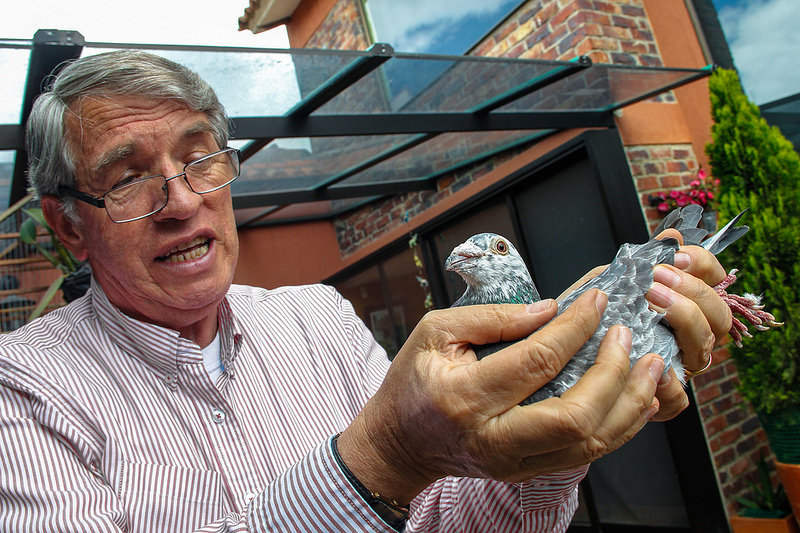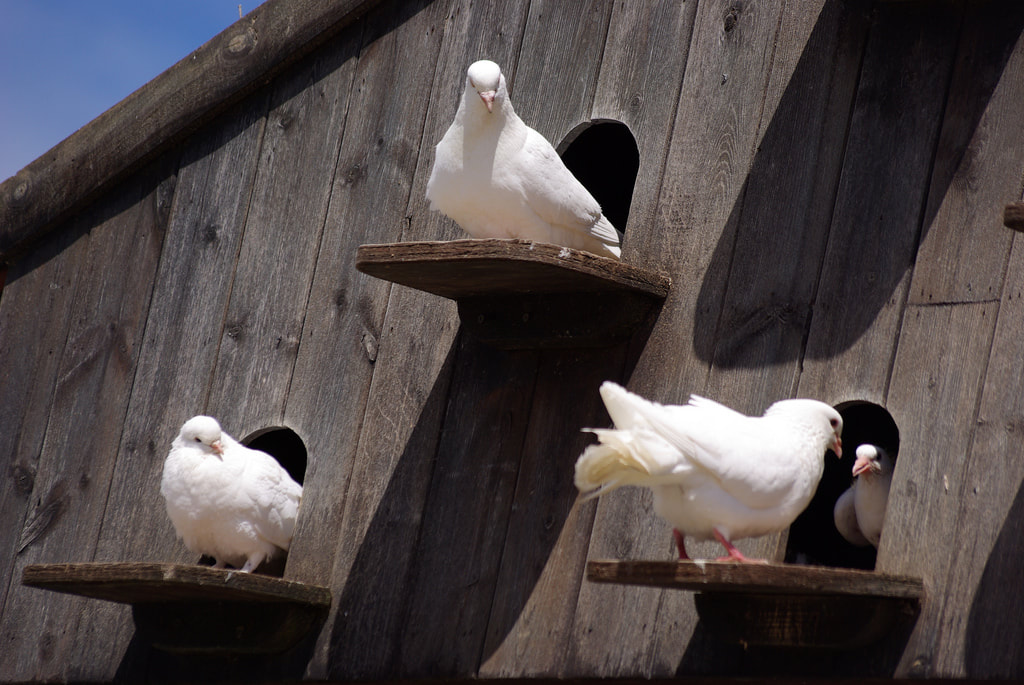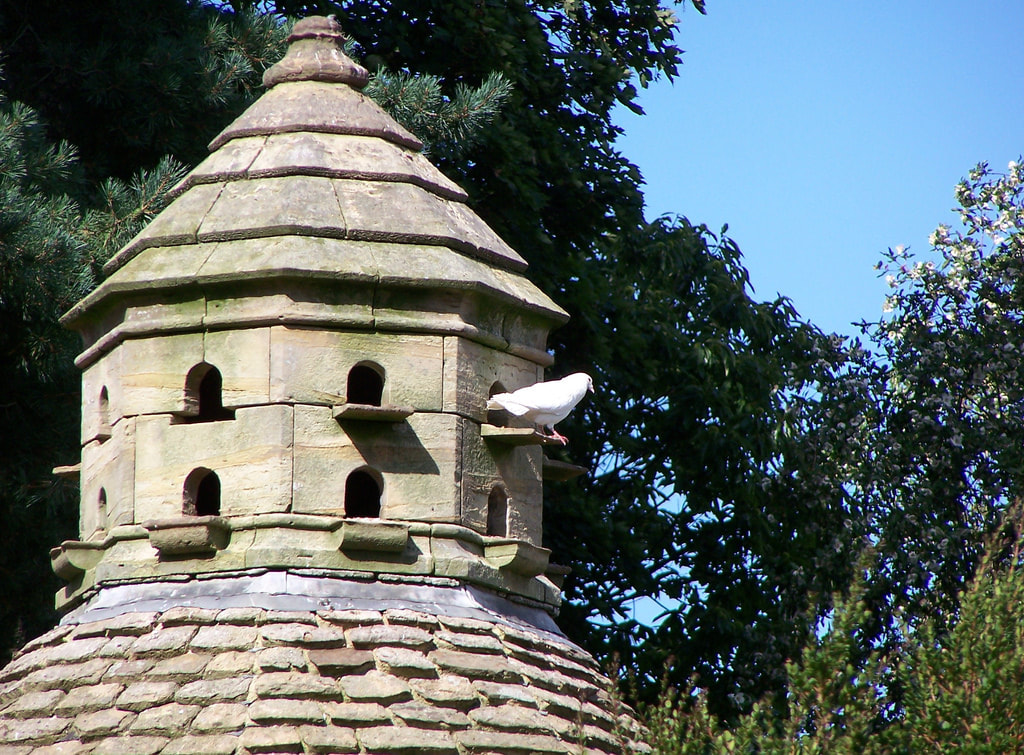Keeping Pigeons
When I used to visit the rural farm in Cyprus where my family farmed I remember very well the dovecotes dotted around the landscape. Flocks of pigeons would leave the dovecotes flying in perfect synchrony around the arid hills returning to roost during the heat of mid day and the late afternoon. I remember one day at about 5pm there was a commotion as the flock of pigeons burst out of the roost and circled upwards out of the village. I remember seeing the dovecote side was wide open and the old lady from across the dry river bed was on a ladder reaching inside. She pulled out a young pigeon and held it under her arm as she shut the dovecote door and climbed back down the ladder. It was quite obvious dinner was about to be prepared.
In my quest to learn more about human self sufficiency away from unsustainable farming practices I have talked about pigeons as a food source to people over the years. The response is always the same ‘barely worth it mate!’ the work of plucking, gutting and preparing doesn’t justify the amount of meat on them. Well these people have never lived in a country with historical arid droughts, pillaging pirates, famines and war such as the hardened farming people of Cyprus or most rural Mediterranean and Arab regions for that matter.
Pigeons are tough, intelligent resilient birds which given somewhere to roost and a small percentage of their daily feeding requirements can produce a minimum input amount of sustainable meat production for a small family. During the great depression in America keeping pigeons was the difference between eating well and starvation. Many people learned how to keep pigeons with few resources and sustained a symbiosis which allowed pigeons safe roosting from predators and in return some birds for the table.
Pigeons have the unique ability to fly over large areas collecting food from the regional environment. By providing perfect roosting sites for the flock you are allowing pigeons to bring all that biomass to your land and tap into it when resources are low. Unlike larger meat birds like turkeys the amount of work, housing, cleaning, security and bought in feeds pigeons are a much better deal! It is no accident in poor rural communities across the world man made pigeon roosts are a common sight.
Squab or young pigeon is delicious and a highly prized delicacy only found in expensive restaurants and rare to find in shops. Pigeons are some of the easiest meat birds to raise especially if you invest it the correct set up. A good breading pair of pigeons will produce about 12 young birds within a year that means four breeding pairs should provide about 1 squab a week. Spring and summer are more productive than winter and autumn but with a sizable flock pigeons can become a useful method of food production.
You have two choices here to build a 3 metre square shed with fly or go for the dovecote method. The shed method gives you greater control on the bird’s movements with a self contained fly area with a wall of nesting areas behind the fly. Each breeding pair will require a roosting and nesting area of 4 square feet. There are various resources of designs of these you can find online. There are some great readymade pigeon lofts available here. Dovecotes are also a good way to keep pigeons but are a little less hands on and harder to access and clean. They are however a less hands on wilder way of keeping your pigeons a better option in you want your flock to be more wild and self sustaining.
Pigeons do suffer with similar problems to chickens such as mite but with careful management and cleanliness you should minimal problems. Pigeons do however have slightly different feed requirements and you should feed your flock with a special pigeon feed and grit should be provided. Being such a niche method of food production there are some great resources and information if you are seriously considering raising pigeons.
Raising Pigeons For Meat is a staple of holistic knowledge and everything you need to know about raising a constant supply of self sufficient Squab meat for only a moderate investment. The over 400 page book includes information of housing, feeding breeding and harvesting your birds.
How To Breed, Race, Win And Make Money With Racing Pigeons is a manual that does focus on raising racing pigeons but has great information on breading, housing and looking after pigeons also. If you are serious about knowing everything about pigeons this is a useful tool for producing healthy happy meat birds.








